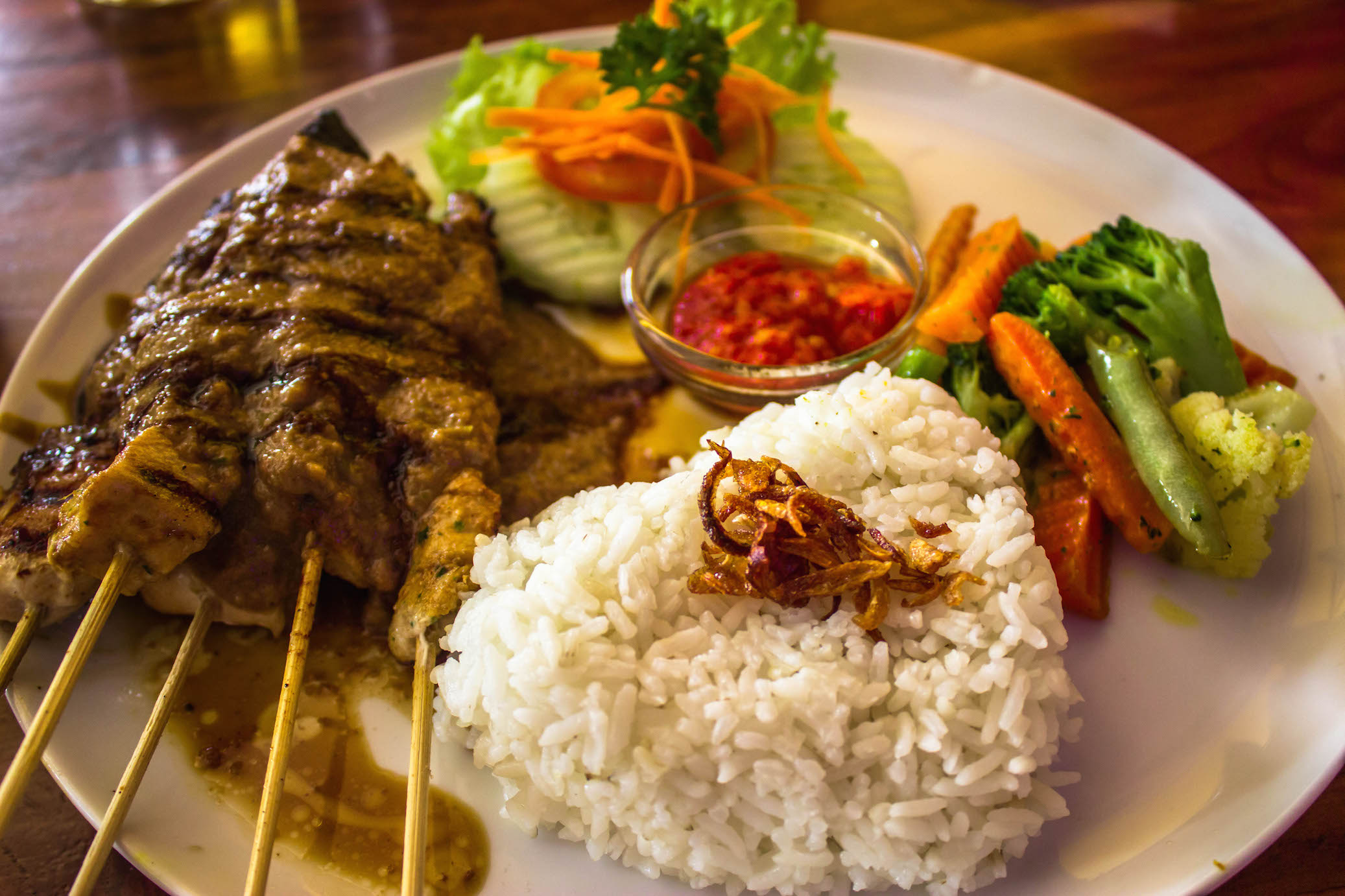Indonesian food is, expectantly, as diverse as the country itself. There were so many dishes and regional variations, and not nearly enough time to get a good grasp of it all. I still feel like an amateur when it comes to Indonesian food, not nearly as knowledgeable or experienced to hold my own in a discussion. Sometimes I wish I had a culinary expert or a foodie local with me everyday to order on my behalf and explain the details. Since I had to figure it out on my own, it was much slower going. Just learning the names of typical dishes took some time. While I would love to wax eloquent about Indonesian food, unfortunately the best I can manage is a brief nod to some popular dishes.

I will always remember the colourful way in which Indonesian food was presented. No matter the dish, it always came in a vibrant display. A ceramic plate or a bamboo basket. Dark green banana leaf linings. Yellow or white rice. Bright red sambal (freshly made chili sauce) or tomato slices on the side. Fresh vegetables in various shades of green. Beige prawn crackers in a pile. Brown peanut sauce drizzled on top. Indonesian food shows that eating is about more than just food that tastes good. It’s the whole culinary experience; a feast for all the senses.

In predominantly Muslim communities, the Islamic halal dietary law is followed, meaning no pork or non-halal meats plus no lard. This was why we made sure to eat our fill of pork and lechon in the Philippines. Chicken (ayam) we had most often, followed by beef (daging), with the occasional duck (bebek, more of a personal preference).

A popular way of cooking meat in Indonesian food is sate, or pre-seasoned, skewered meat that’s then grilled. For meat-lovers, you can’t beat the simplicity of meat on a stick, grilled to perfection. We usually ordered sate ayam, which served in peanut sauce, was tender and delicious. Usually bamboo skewers are used, but in more authentic and exotic versions, coconut palm fronds. Just the skewers were served at small roadside stalls, while in a sit down restaurant, it often came in that typically colourful plate with rice and all the sides. Sate is an Indonesian classic.

Rendang is another popular meat cooking method in Indonesian food, originating in West Sumatra. Beef rendang (rendang daging) was a dish I loved long before this trip began. It’s not the most attractive-looking dish – basically a pile of brown or dark red cubes of meat covered in sauce. Food experts describe it as a “caramelized beef curry,” which I think is fitting. A large variety of spices are mixed into the meat – in the days before refrigerators, this was an ideal way to preserve meat in the tropical climate (properly cooked rendang can last weeks). The meat is left to slowly simmer for hours and hours in spices and coconut milk until the liquid is pretty much gone and all the flavour has been soaked up by the meat. The resulting taste was complex and incomparable.
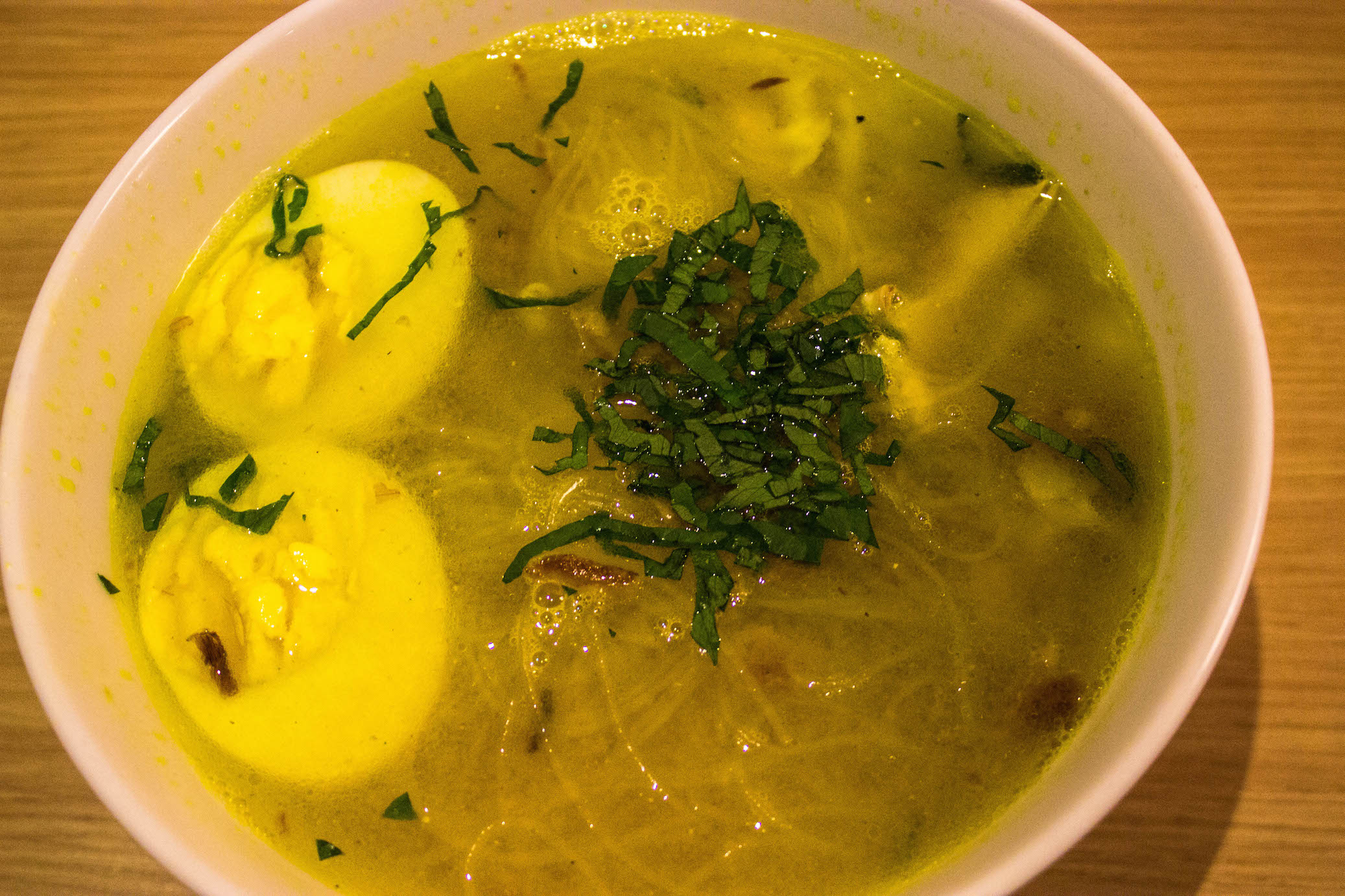
Besides grilled or slow-cooked, Indonesians everywhere cook their meat in rich broth soups known as soto. It’s a “national dish” of sorts because it’s present in local variations across the nation. While it can essentially be categorized as a noodle soup, the chosen broth and meat (often chicken for soto ayam), rather than the noodles, are the main focus. The vermicelli or glass noodles are more accompaniments, along with many potential others, like eggs, prawn crackers, bean sprouts, etc. The deeply yellow yet nonetheless clear broth is a very distinct look that I have not seen in any other soup dish. For me, soto ayam tasted like a chicken broth with definite hints of spices akin to curry. Usually served with rice, I had a hard time figuring out how to eat a “noodle soup” dish with rice, a situation I’ve never found myself in before (do you put rice into the soup or put content in the soup on the rice?).
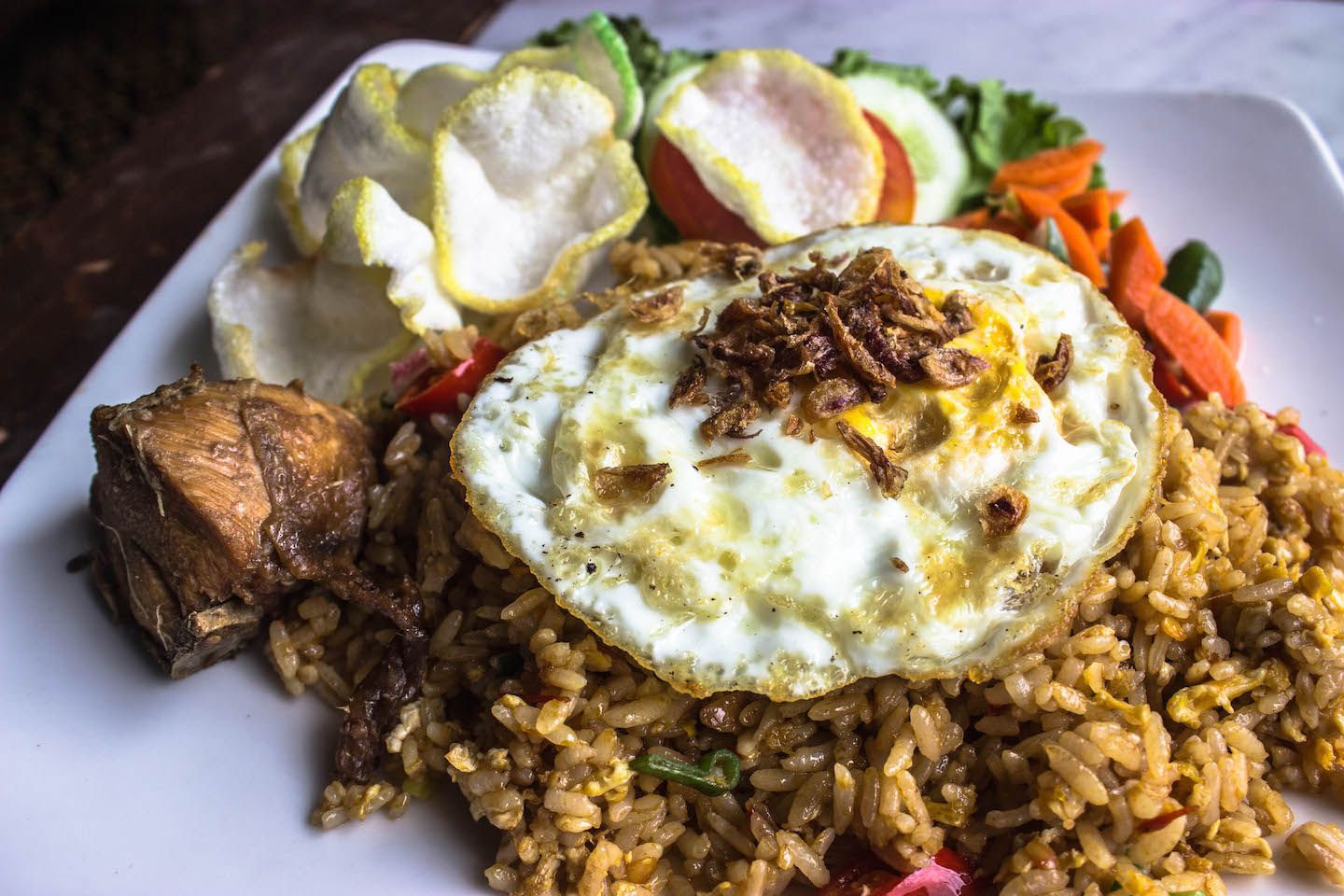
From an omnipresent dish to an absolute staple in Indonesian (and really, all Asian) cuisine: rice. We learned early on that nasi is the Indonesian word for rice, one of the most common words found in menus, often followed by another that specifies the type or cooking methods (such as goreng for fried). There were simply too many rice dishes to try. Nasi goreng was an obvious classic, and we loved the sambal, fried egg, prawn crackers (etc, etc) that came on the side. Nasi uduk had rice soaked in coconut milk (with fried shallots sprinkled on top). Nasi tumpeng served rice in a cone-shaped mountain. Nasi campur is white rice with small portions of multiple meat and vegetable dishes (wildly popular in Bali). For lunch, locals ate their preferred rice dish of choice directly from an unwrapped banana leaf package with their bare hands.
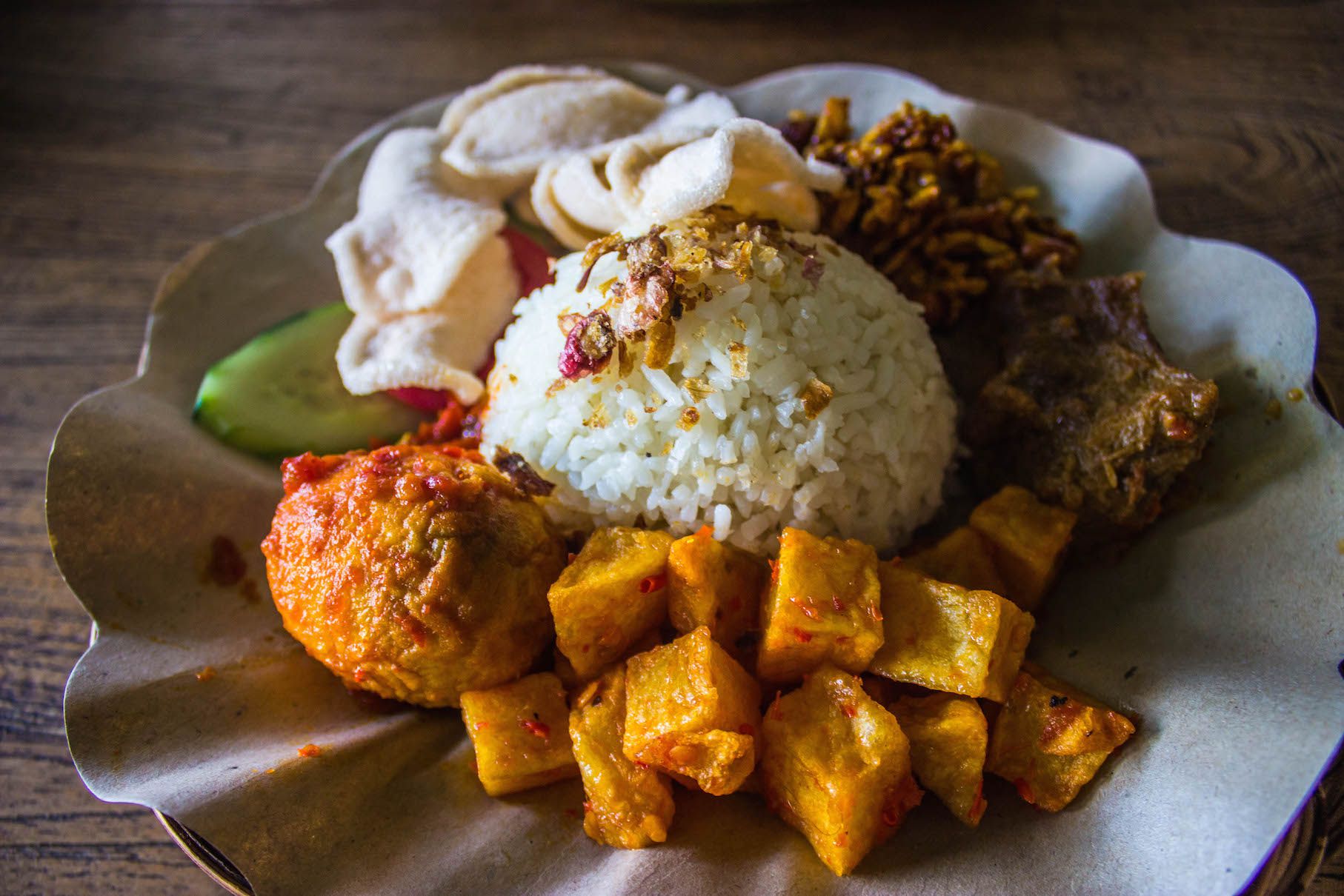
Carlos loved a good mie (noodle) dish. Mie goreng was default for him… though I can’t say this was unique to Indonesian food, since fried noodle has been a default for him everywhere in Asia. Sometimes the noodles are wheat-based, other times they’re the instant version. As usual, there is a choice of meat. While the variation on mie dishes are plenty, it is still nowhere near as widespread and favoured as rice. Especially since rice transcends Indonesian food; its cultivation and consumption are a central part of Indonesian culture and history.
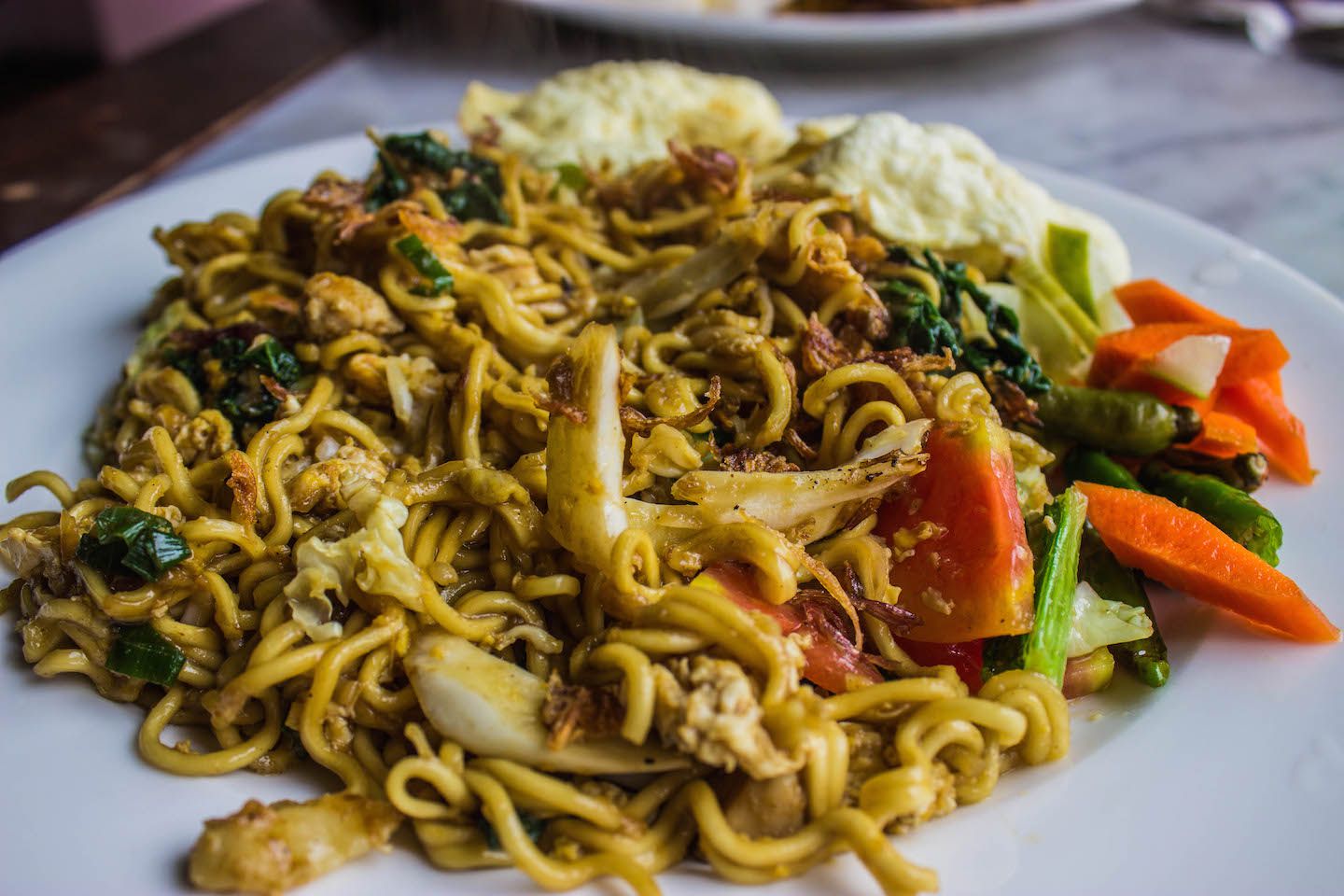
It may seem that we are always pre-occupied with eating endless amounts of meat, but believe it or not, we really do try to incorporate as much vegetables into our diet as possible. On the one hand, it’s hard because fresh, uncooked food can pose a risk in this part of the world (though we’ve generally been lucky plus our stomachs have toughened up). On the other hand, most Asian cuisines are really good about cooking vegetables in imaginative and flavourful ways, so our options go way beyond just eating raw vegetables.
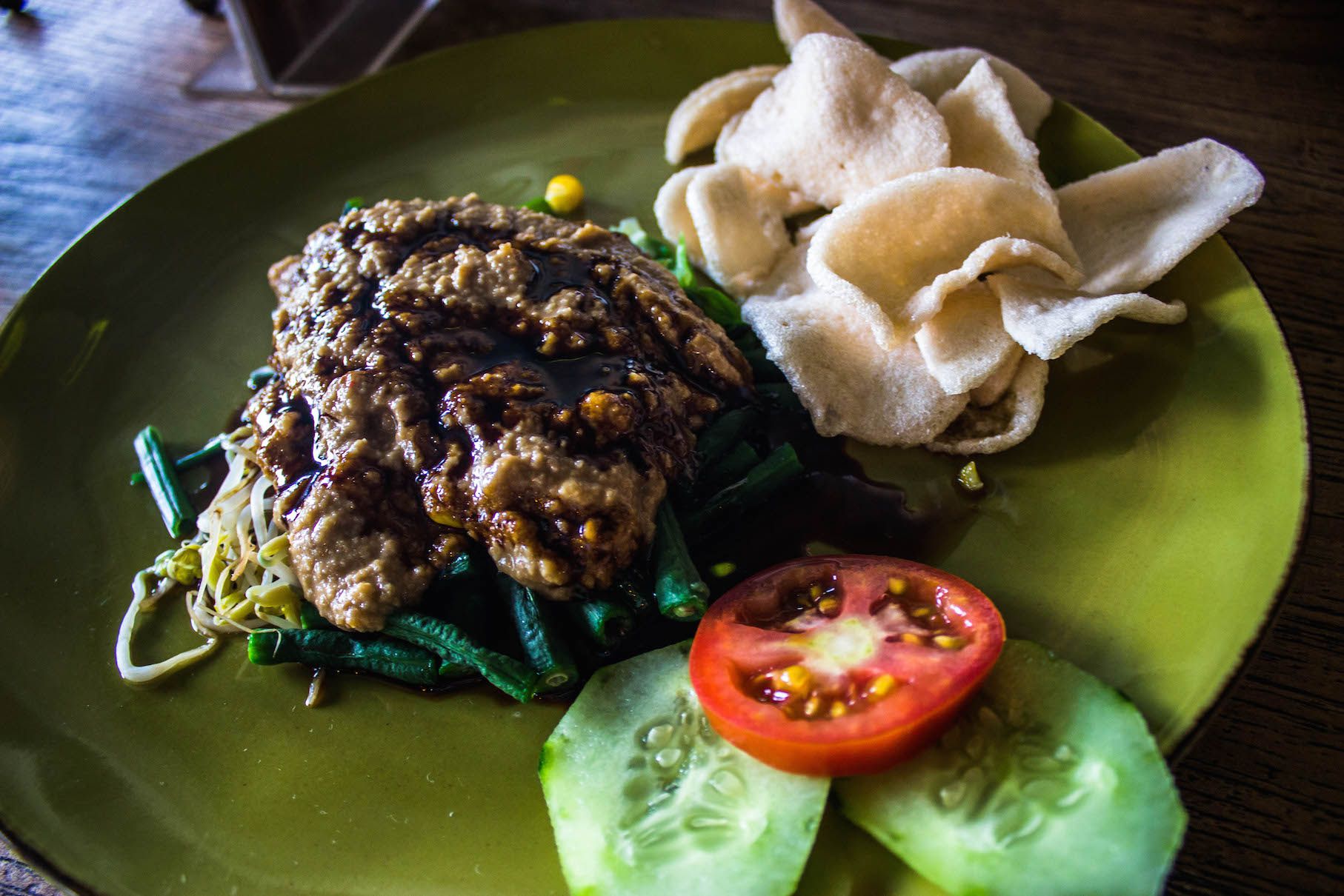
In Indonesia, we often found ourselves ordering gado-gado as a daily dose of vegetables. It’s an Indonesian salad – vegetables are steamed instead of raw, with peanut sauce as dressing. A whole mix of vegetables are blanched for gado-gado, ranging from spinach to string beans to cabbage. The sweet yet savoury plus spicy taste of peanut sauce is great for giving flavour to the otherwise bland vegetables. As much as I liked peanut sauce, however, I learned the hard way that it can be cloying in excess. Ordering sate and gado-gado together is too much peanut sauce for one meal!
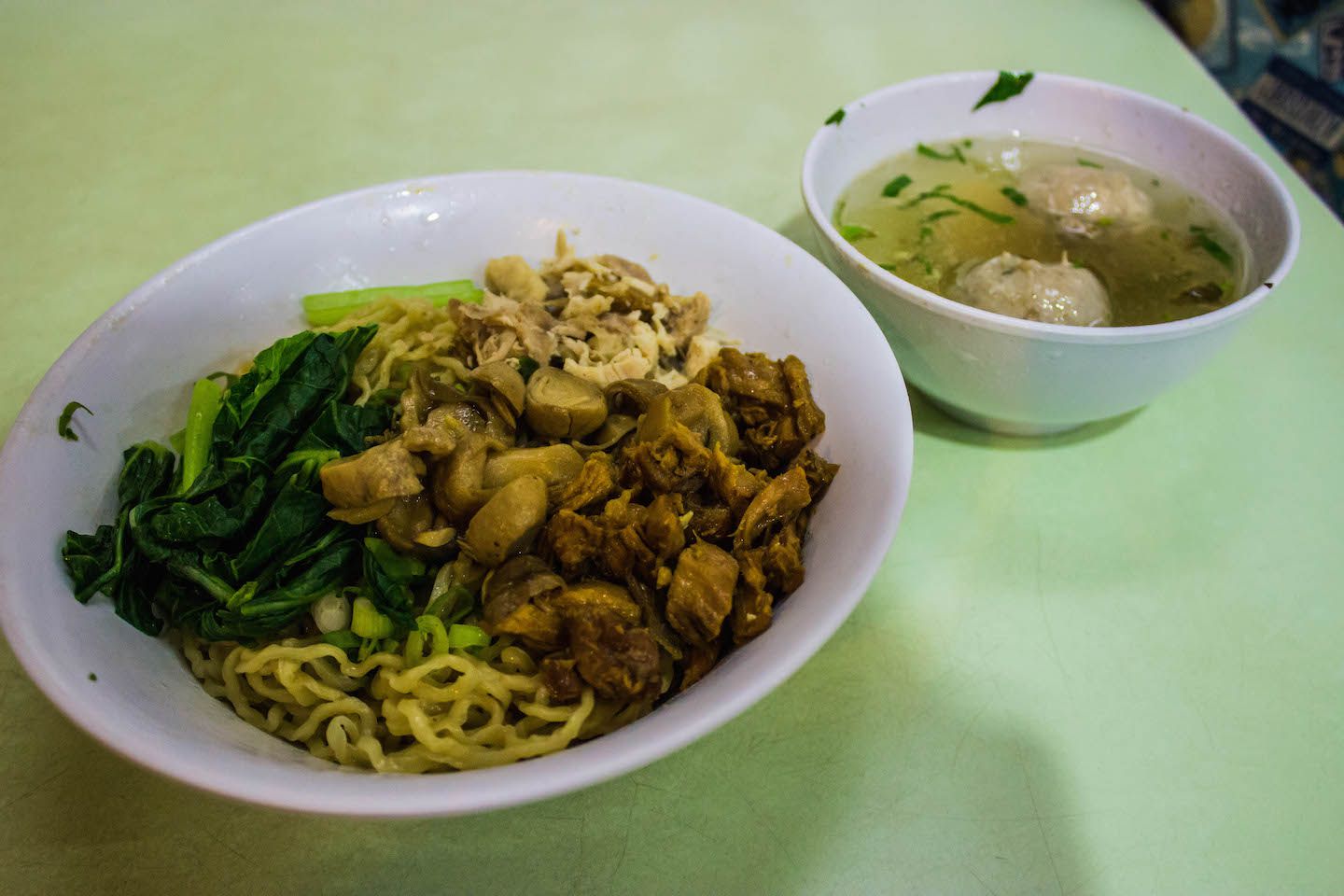
We barely covered the basics in Indonesian food this time around. Hopefully this is a foundation to build upon for the next times we visit. Given the many islands we missed (including all of Sumatra!), we can now branch out into more specifics in the future, with a roadmap of sorts in mind. For me, it’s the subtleties in regional variations that add depth to a cuisine. With so many ethnic groups and a wide range of indigenous and foreign influences, I can’t imagine ever getting tired of exploring Indonesian food.
